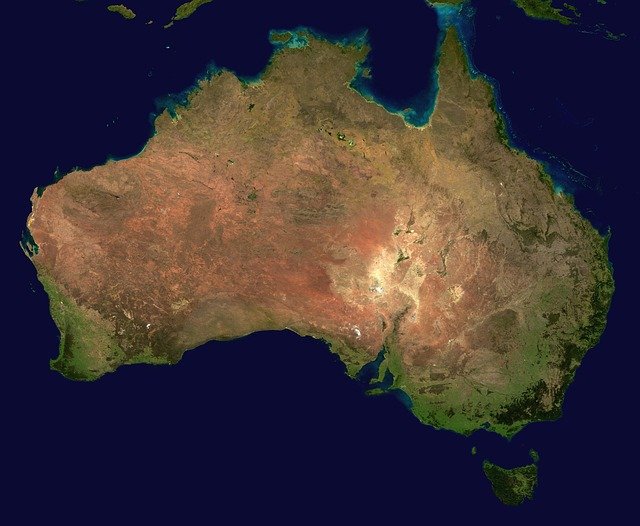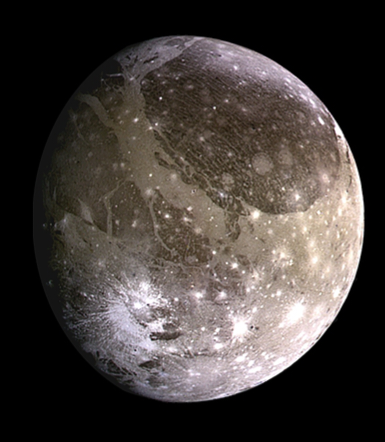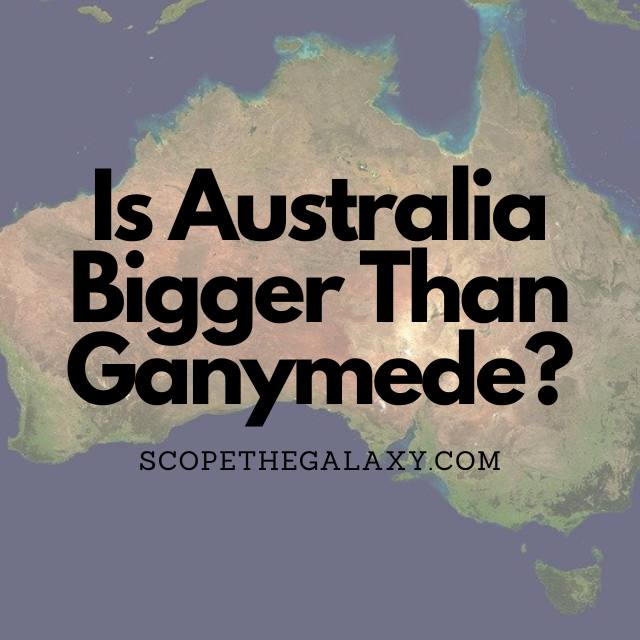*This post may contain affiliate links. This means we may make a commission if you purchase an item using one of our links*
Australia is only the 6th biggest country on Earth and a flat plane of land so it makes sense that it wouldn’t really compare in size to Ganymede, the largest moon in our Solar System. Ganymede has a surface area of 87.2 million sq. km while Australia’s is far lower at 7.6 million sq. km. In regards to volume Australia’s is 304.7 million cubic km whereas Ganymede’s volume is 76.6 billion cubic km.
Although the numbers mentioned above paints a very concrete pictures as to how much bigger Ganymede is than Australia, for a more detailed look at how each body is so big, continue reading.
How Big Is Australia?

Australia is the sixth largest country in the world, following Russia, Canada, China, the USA, and Brazil. This commonwealth country comprises mainland Australia plus Tasmania and several other smaller islands; this land has a total area of 7,617,930 sq. km.
As for the overall volume of Australia, if we consider that Earth’s crust ranges from around 5 to 70 km in thickness. Generally, this crust is thicker under the continental land, which averages 40 km.
Therefore, by taking this average of 40km and multiplying it by the surface area of Australia, the volume would come up to roughly 304,717,200 cubic km.
The diameter of Australia, measuring from East to West, is 4000km, making it wider than the moon along with a large number of the smaller moons and planets like Pluto.
Within this expansive continent is a collection of mountainous regions and ranges. The largest is the Great Dividing Range or the Eastern Highlands, which stretch 3,500km parallel to the East Coast.
Within the Great Dividing range lie the Australian Alps, a mountain range that is host to some of the highest peaks in the country, including Mount Kosciuszko, which is 2,228m high.
Fifty kilometers to the west of Sydney are the Blue Mountains, which are named for the blue haze filling the surrounding area. While these mountains are impressive, Australia has surprisingly few notable peaks considering its size. Instead, it has vast expanses of desert known as the Australian outback.
How Big Is Ganymede?

Ganymede is the largest moon of Jupiter and the largest object in our solar system not to be properly classified as a planet. It is the only moon with a magnetic field of its own, and one of the few bodies in our solar system known to possess a magnetosphere.
Ganymede has a diameter of 5,262 km and a surface area of 87,200,000 sq. km. Not only is it bigger when it comes to diameter, but its surface area is far vaster because this natural satellite is spherical rather than flat. This gives it an impressive volume of 76,600,000,000 cubic km.
This moon is a source of fascination for scientists, with Hubble observations suggesting it may possess an underground ocean. Potentially, this ocean could contain more water than all the water on Earth combined with a depth of up to 100 km – ten times deeper than the oceans on Earth. This ocean is buried beneath a 150 km ice crust.
The terrain of Ganymede falls into two distinct categories: large, bright ridged regions and older, darker ground. This terrain pattern suggests the moon could have been under significant tension from global tectonic processes.
Galileo Galilei first discovered the moon in January 1610; significant because it was the first time scientists observed an object orbiting a planet other than Earth. And this helped us recognize that the Sun lies at the center of our Universe rather than the Earth.
Ganymede formed from leftover gas and dust that remained after Jupiter’s formation, which means that it is roughly the same age as our solar system – 4.5 billion years old.
Three main layers comprise Ganymede; a metallic core, a surrounding mantle of rock, and a top layer of ice. Computer models simulating Ganymede’s makeup show that more ice and oceans could be sandwiched between these main layers. The Hubble Space Telescope also discovered that the moon might have a thin atmosphere of oxygen.
Ganymede is the seventh moon from Jupiter, which orbits at around 1.070 million kilometers away from its planet. This means that Ganymede takes roughly seven Earth days to orbit its planet. While Ganymede is vast – larger than the planet Mercury – it only possesses half the mass of our closest planet to the Sun, classifying it as a low-density object.
Summary
Australia pales in comparison to Ganymede’s sheer breadth ,in both diameter, even if it may be larger than some of the lesser sized moons in our solar system.
After all a flat plane is often smaller than spherical bodies, especially those that are among the biggest entities in our entire solar system too, which Ganymede obviously is.

